Creativity may not be what comes to mind when you think of a mental illness, but it’s worth considering that many creative people are also often diagnosed with anxiety disorders. In fact, creativity is a common trait among those who suffer from anxiety disorders. Yet, it’s not well-known what causes this link or what to do about it.
In this article, we review some of the emerging evidence for the relationship between creativity and anxiety.
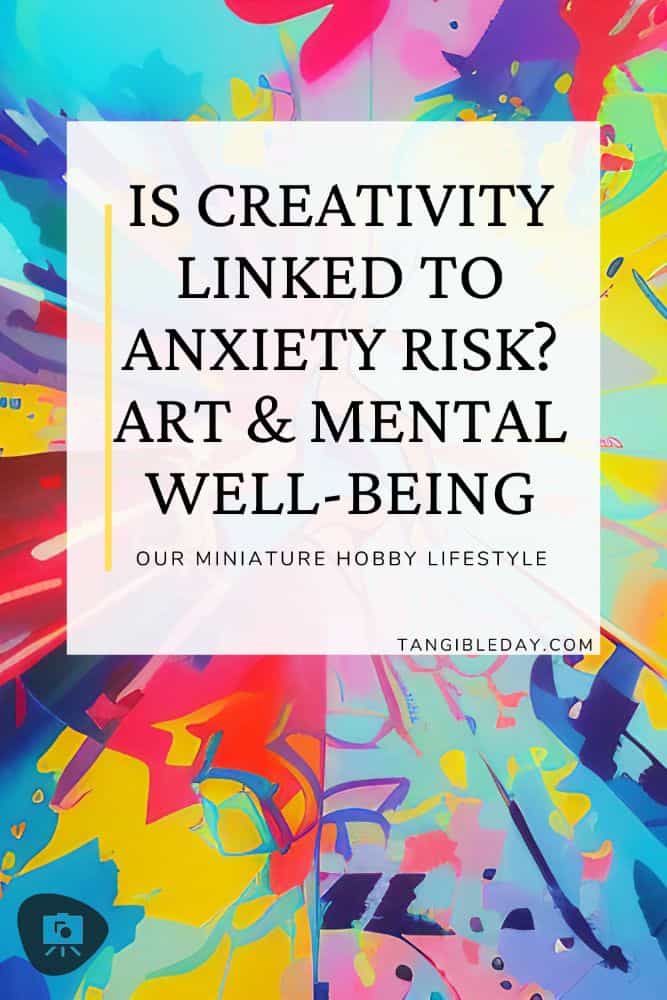
Disclaimer: It’s rare to find people who regularly make time for meaningful discussions about sensitive topics, such as mental health, let alone take a moment from their busy schedules to care about how these issues intersect with each other.I always enjoy hearing what others think or feel because it helps me understand where they’re coming from, even more than just reading about it for myself does–especially when there are huge personality differences between us like we see in our community here!
Facts and Figures: Mental Health
- 1 in 4 people in the United States suffers from a diagnosable mental disorder
- 1 in 5 adults have an anxiety disorder in any given year
- 1 in 20 U.S. adults experience serious mental illness each year
- 1 in 6 U.S. youth aged 6-17 experience a mental health disorder each year
- 50% of all lifetime mental illness begins by age 14, and 75% by age 24
- Suicide is the 2nd leading cause of death among people aged 10-34
What Makes Someone Creative?
Creativity is typically defined as a process of coming up with new ideas or concepts that have a practical use. This could be painting a bunch of wargaming models, or planning a Dungeons & Dragons campaign. Creativity involves breaking out of mental patterns and developing an ability to view things from multiple perspectives.
Here’s a common example: When you were a child, you may have invented imaginary friends or used toy figures, and created play scenarios with them. Even though you understood that these were just make-believe, your mind was processing information from a different angle than how the majority of people (aka adults) saw things.
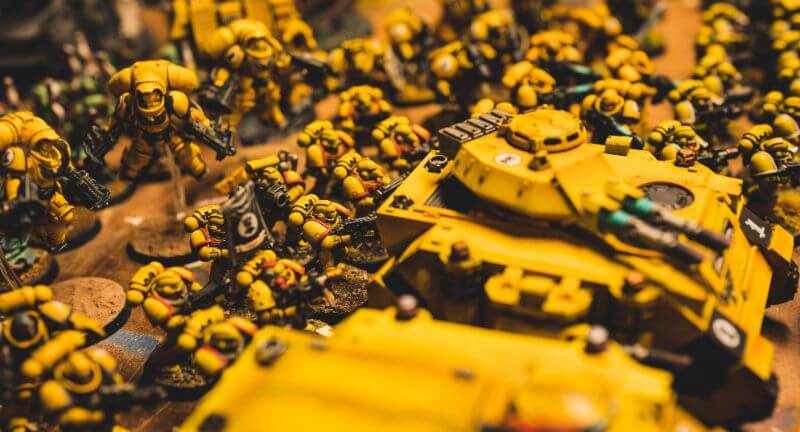
While this is a broad example, everyone uses their imagination to solve problems or cope with situations. Ultimately, your creativity makes your work unique and gives you power over the physical world.
What is Anxiety? A Biological Perspective
Anxiety is triggered by stress in any type of situation, and it’s caused by a chemical interplay in the brain. When something stressful happens, your brain releases stress hormones that trigger an emotional response in your body and mind. The problem with these chemicals is that they can be released inappropriately without enough evidence to justify them (read more about anxiety).
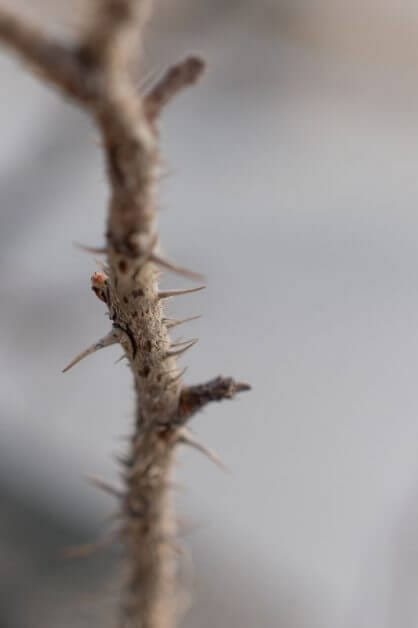
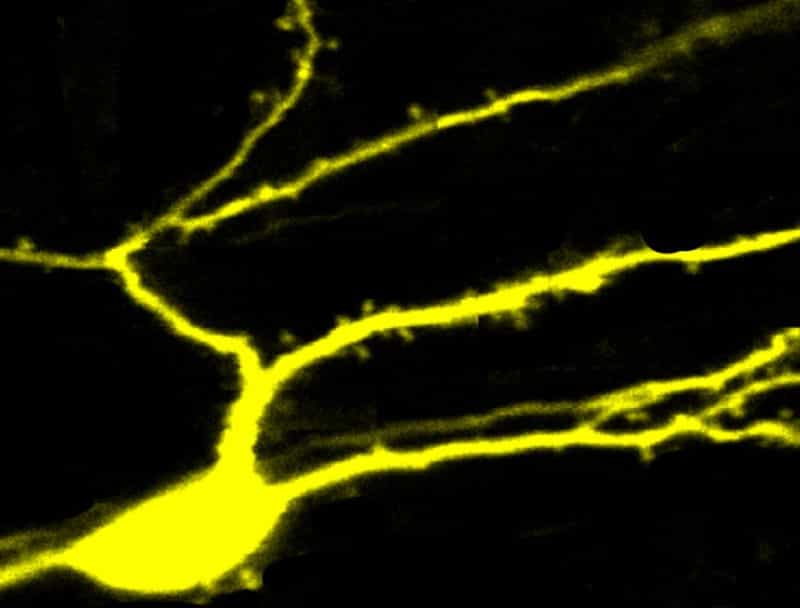
With anxiety disorders, there is an underlying biological reason for excessive worry, negative thoughts, and invasive irrational feelings that aren’t helpful to your day to day living. In more severe cases, anxiety drives a person into a “fight or flight” mode that they can’t get out of (source). It’s a mental, emotional prison.
Overall, chronic and severe anxiety is an issue many people face, which may be hardwired into their nervous system. Fortunately, more research emerges everyday that may improve management of an individual’s anxiety.

Why Creativity Often Coexists with Anxiety
There is no specific reason why creativity and anxiety disorders are linked. However, one explanation that seems to make sense is that being creative and having anxiety both involve a lot of deep thought processing.
When you’re creating something new, you’re also processing different pieces of information so that you can organize them in a way that makes sense. Perhaps you’re trying to come up with a color scheme for your miniature piece, or figure out how to convert a Warhammer Ork model into something different that you envisioned.
Whatever the case, the more deeply you think about something, the more real it becomes (funny enough, isn’t this how Orks come up with their weird contraptions in the Warhammer Lore?).
This deeper-thinking process includes problems that you’re trying to solve. If you’ve ever tried to troubleshoot a problem, you can probably relate to this feeling. Your brain constantly collects and processes information until it concludes whether something won’t work or that it will be a waste of time.
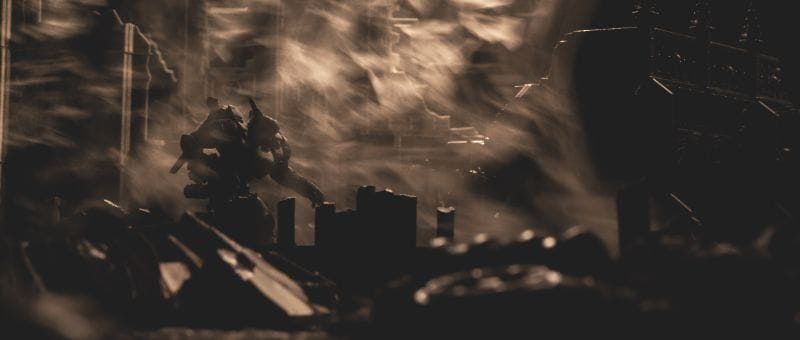
While it’s normal to be anxious about a problem or situation, this reaction becomes problematic when your brain continues to process the same information over and over again (aka rumination). Some people have brains that are hardwired to worry more than others. It’s possible they’re more likely to take in extra information before reacting.
This can be beneficial in situations where your safety is at stake or if you need to make a decision. But, this is problematic when your brain doesn’t know how to stop this ruminating process. It creates what you’ve probably heard to as “analysis paralysis ,” which serves no purpose other than creating stress. You’re essentially stuck.
Why Are People with Anxiety More Likely to Be Creative
It’s a common impression that your stereotypical artist is “crazy.” Whether it’s Van Gogh cutting off part of his own ear or Sylvia Plath writing about her suicide attempts, many creative people are thought to have mental health issues. Do you know any wargamers or creative types with underlying mental health challenges?
Some research suggests that the stereotypical impression of creative people having mental health struggles may be accurate (source). Some types of mental illnesses like anxiety disorders appear to have a higher prevalence among creative people than in the general population. But that doesn’t mean you should stop pursuing your goals! Even if you do struggle with anxiety and other mental health issues, it doesn’t have to hold you back from living a full life.
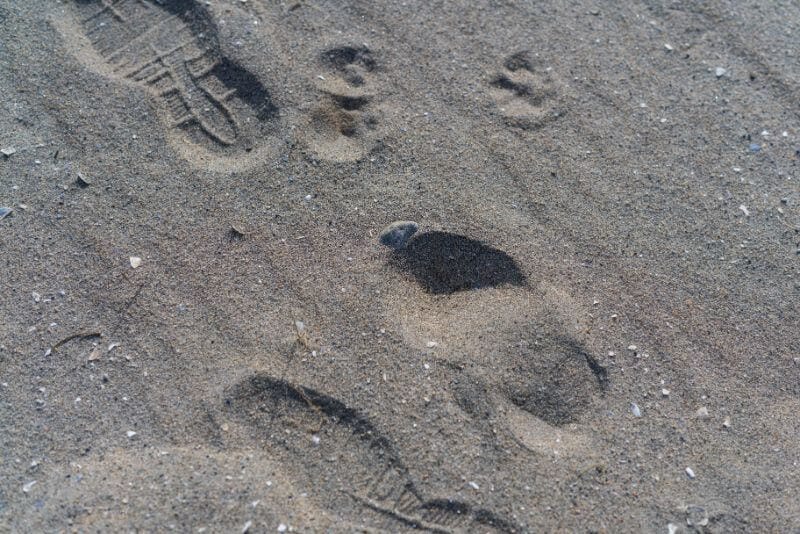
A Relationship Between Creativity and Anxiety Disorders
There are some tentative links between creativity and anxiety disorders. The most well-known link is found between bipolar disorder (manic depression) and creativity (source). This mental illness causes extreme shifts in energy. Bipolar individuals may shift between periods of hyperactivity and creativity, and with phases of depression and lethargy. Note that bipolar disorder is different than anxiety. In the latter, there are more stable symptoms like fear, worry, and feelings of panic.
An important aspect of the connection between bipolar and anxiety disorder is that the similar trait of introspection and analysis. This leads to finding more creative ways to deal with internal struggles. It is no wonder that there appears to be a higher prevalence of creative people among the mentally ill.
A Genetic Link?
One of the most well-known links between creativity and mental illness is found in what researchers call the “Wagner-Nietzsche Hypothesis”. In this hypothesis, creative people are more likely to exhibit traits found in mental illnesses, and vice versa. This hypothesis was first proposed by psychologist Hans Eysenck, who suggested that creativity and mental illness might share a common genetic link.
A common genetic link may lead to vulnerability to stress-related events later in life (source). It is important to emphasize that a clear biological link between creativity and anxiety has not been established.
What Can You Do About This Link Between Creativity and Anxiety Disorders?
Although there isn’t a direct biological relationship between anxiety and creativity, the perception is a part of our societal psyche. An open discussion around this topic will make easier to recognize if you or someone close may have an anxiety disorder. A dialogue about these issues can be especially important for those who struggle with anxiety disorders.
It’s been found that only around 37% of people suffering from anxiety disorders manage to reach out and get help.
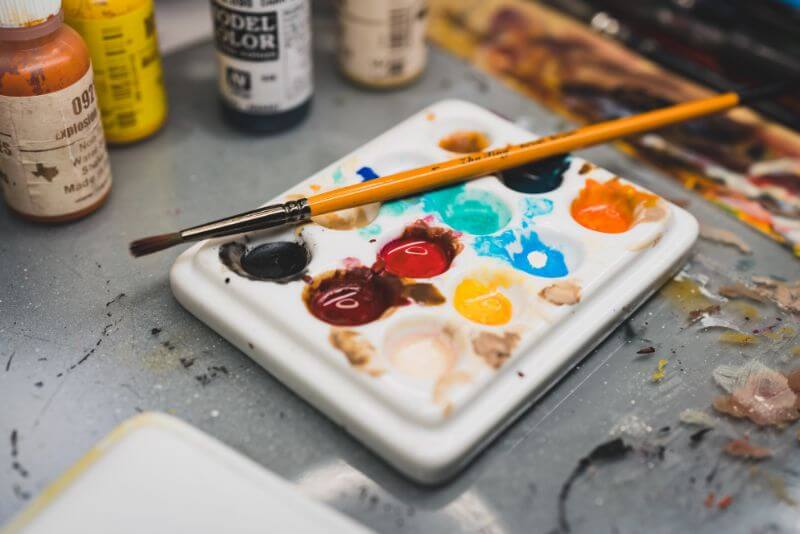
By learning more about how anxiety disorders affect creativity, we can learn how creative people might approach their struggles in unique ways that may lead them to better solutions for dealing with mental health issues—and that might just benefit everyone.
While creative people may be more prone to anxiety disorders, you don’t have to let the fear of having a mental illness hold you back from living out your creative potential. Just keep in mind that creativity and mental health issues can sometimes go hand-in-hand, but neither one has to be a deal breaker!
Creative people are often inspired by their struggles and may have found unique ways to cope with their issues. Who knows, maybe what you’ve learned from anxiety will even help other people who are struggling just like you.
Are Anxiety Prone Individuals More Creative?
Since people with anxiety are constantly trying to process their thoughts and feelings, there is an increased chance at coming up with new ideas. There is a misconception that creativity happens during moments of happiness or relaxation. However, in reality, it is much more likely to occur during times of stress and anxiety.
Anxiety and creativity are very cyclical. Creative people know this because they have to be able to work through stressful situations in order to come up with creative ideas—and the cycle repeats itself.
Creatives also tend to think about things more deeply than those who aren’t creative do—which can lead them towards experiences that might cause them mental illness. Lastly, after experiencing these episodes of mental illness, creatives often find new ways to deal with their struggles, which makes them more likely to experience these creative bursts.
This raises the question of whether artist anxiety is a result or a catalyst of innate creativity within individuals.
What is Artist Anxiety?
The creative process of being an artist can be both rewarding and anxiety-inducing. As artists put their work out into the public sphere, they face the fear of being judged. The idea of one’s work not resonating with the general public or having critical reviews can lead to feelings of anxiety. Additionally, financial instability is often a source of stress for artists, as many struggle to make a living off their craft. This uncertainty leads to more insecurity and worries about whether or not they will be able to continue creating.
Related to this, comparison syndrome is also a very real concern for creators. When constantly exposed to other people’s successes, it can be easy for artists to become overwhelmed by feelings of inadequacy in comparison. Such comparisons can further fuel one’s anxieties, as well as create a sense of competitiveness that detracts from creativity rather than inspires it.
Overall, artist anxiety is an unfortunate side effect that many people in creative fields have to face due to how competitive and unforgiving the industry can be. Taking steps such as setting realistic goals and taking breaks when feeling overwhelmed are important in managing this type of stress.
Recognizing the nuances of artist anxiety is the first step. But if you find yourself in its grips, wondering how it’s affecting your creativity, what can you do?
What Can You Do If You Feel Like Your Anxiety is Affecting Your Ability to Create?
Creative people are more likely to experience anxiety disorders due in part to the high levels of dopamine that fuels creative work. This doesn’t mean that a person with an anxiety disorder can’t find success as a creative person–in fact, some studies have shown that those with mental health issues are often better equipped to cope with the stresses of the types of creative jobs they pursue than others who don’t suffer from these same ailments.
One of the problems faced by those dealing with both creativity and anxiety is what it means to be successful in their creative work. Creative people may not feel satisfied unless they’ve created something worthwhile, and those with anxiety disorders may find themselves doubting themselves or thinking they’re not good enough. But there are ways to manage these negative feelings that can make it easier for creative people with anxiety disorders to pursue their own creative goals.

For instance, you can reach out and get support from others in your field of work. If you’re a poet and you want to start a blog, seek out another poet whose active online. Finding someone else who shares the same goals and creative mindset can help you push through any negative feelings you may have.
How Your Art and Creativity Can Help With Anxiety
It’s also a good idea to use some of your own art to support yourself. If you’re an artist, painting or drawing something, then focusing on what you want to achieve in your creation will help banish the negative voices in your head. I know several miniature painters who are motivated in their work for this very reason.
Creative people also tend to exhibit different coping skills when they’re working. This includes spending time alone or engaging in activities that help them focus on the work at hand. Some creative people with anxiety disorders make it easier for themselves by creating a schedule and sticking to it. A routine helps. Creative individuals may also work on multiple projects, simultaneously. This allows them to stay busy so they can avoid placing attention on their negative feelings.
It’s also important for those with anxiety disorders to seek out social support from people who don’t care about their creative work. Some “creative worriers” tend to make their friends and loved ones a little too invested in their creative successes and failures. It’s definitely good to have people in your life who support you. But, it can be just as healthy to have some time for yourself where nobody else is asking how you’re doing with your writing or if that new song you recorded sounds any good.
People with mental health issues often feel sad, mad, or scared. They do things to cope with their feelings. By knowing about the creative ways other people deal with mental health issues, the more tools you’ll have for navigating your life’s struggles.
Summary: Creative Activities for mental well-Being
| Art and Mental Well-being | |
|---|---|
| Therapeutic Expression | – Journaling: Translating emotions into words for introspection and emotional release. – Sketching or Doodling: Diverts mind from anxious thoughts, providing a sense of calm. – Crafting: Pottery, knitting, scrapbooking, etc. provide a meditative experience. |
| Mindfulness Practices in Art | – Meditative Drawing: Techniques like Zentangle or mandala drawing require focus and induce mindfulness. – Sculpting: Shaping clay or other materials helps to remain present and anchored to the moment. – Coloring: Adult coloring books are popular means of relaxation and mindfulness. |
| Collaborative Creativity | – Art Workshops: Group activities provide a sense of community and shared purpose. – Online Art Communities: Sharing work, gathering feedback, and interacting with fellow artists combats feelings of isolation. |
| Engaging in New Art Forms | – Photography: Provides a new perspective, highlighting the beauty in everyday moments. – Music: Playing an instrument or listening can transport and soothe the mind. – Dance: Physical movement combined with artistic expression is liberating, releasing pent-up energy and emotions. |
Conclusion
Ultimately, I feel like art is incredibly personal, and that’s why it can be difficult to discuss creativity. But I think the reason we can have discussions about deeper issues in our miniature gaming and painting hobbies, is because creativity is central point of commonality.
We are creatives, and thus any topic related to our artistic hobby is open to more engagement and discussion. Mental health is merely another area of intersection.
When you’re talking about anxiety disorders for miniature painters, specifically, creativity may not seem like its related to mental illness. We don’t generally engage this idea. But, there is definitely an relationship between anxiety and creativity. At the end of the day, your creativity is a personal bridge to a diversity of thoughts and ideas.
Learning how to use your creativity, despite anxiety or other mental health struggles, is a more powerful tool than you may think!
I hope you found this article helpful. If you have any feedback or input in your experiences, I’d love to continue the discussion. Contact me or leave a comment below!



Tangible Day on YouTube (Miniatures and More!)

Great article and very relatable, esp as someone with ADHD and mild anxiety.